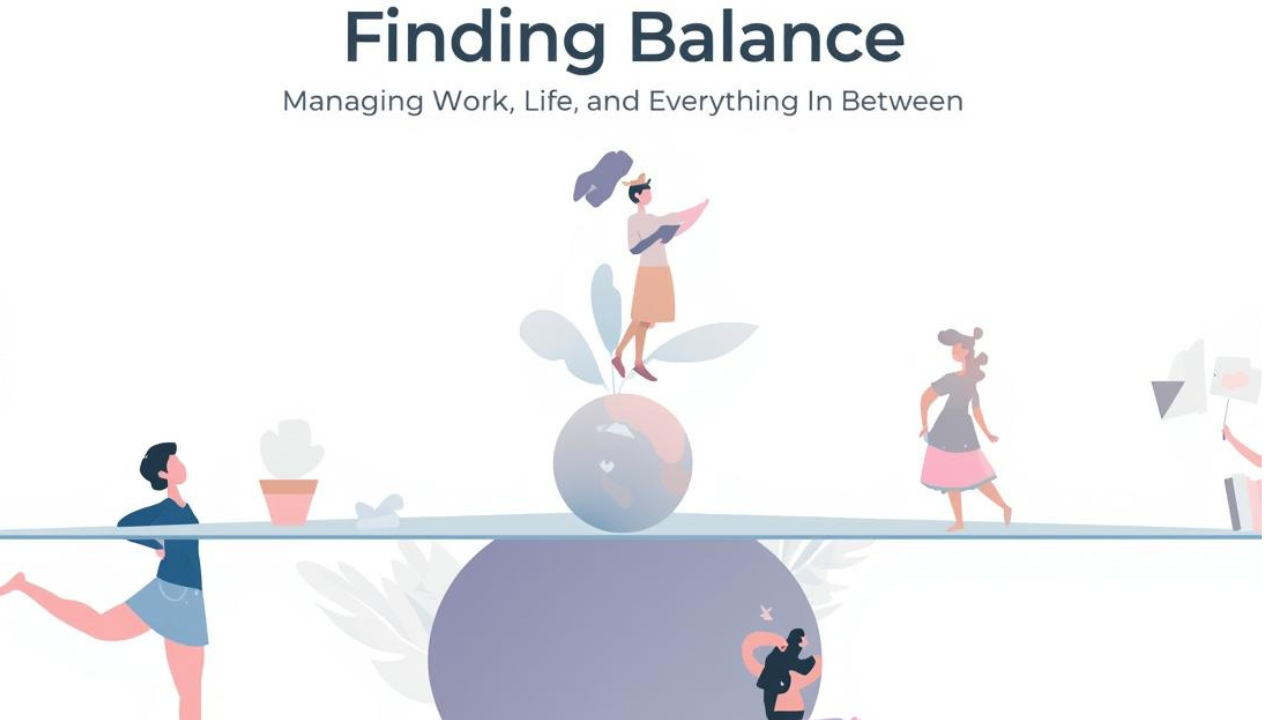Finding Balance: Managing Work, Life, and Everything In Between
In the digital era, where email pings, instant messaging, and global teams never sleep, the boundary between work and life continues to blur. Work‑life balance—once a fringe concept—is now a mainstream priority for employees, organizations, and policymakers.
Balance isn’t perfect symmetry. It’s an ongoing negotiation between work, relationships, self-care, and personal purpose. This article explores:
- Historical evolution of work-life balance
- Latest surveys, data, and corporate trends
- Expert opinions and research
- Individual strategies for managing boundaries
- Future projections for work-life harmony
Background: From Industrial Age to Always‑On Culture
Origins of Work and Leisure
Labor movements of the 19th century popularized the “8‑8‑8” model: eight hours for work, eight for recreation, eight for rest. Over decades, labor laws introduced working-hour limits, paid leave, and safety protections.
Rise of the “Always‑On” Era
Modern forces disrupting balance include:
- Technology & connectivity: Smartphones and cloud services make work omnipresent
- Globalization: Teams across time zones increase pressure
- Gig economy & freelancing: Blurs lines between work and personal life
- Hustle culture: Overwork seen as a badge of honor
- Pandemic impact: Remote work increases flexibility but also intrusion
Latest Developments & Data
Employee Sentiment & Surveys
- Randstad Workmonitor 2025: Work-life balance overtakes pay as top priority (83% vs. 82%)
- Forbes India: 83% employees value balance when choosing or staying in a job
- India Upskilling Trends 2025–26: 82% of professionals prioritize balance alongside salary
- Microsoft global survey: 16% increase in after-hours meetings; weekend emails rising
Corporate & Policy Moves
- Infosys: Urges staff to avoid overtime, challenging past high-hour norms
- Kerala Right to Disconnect Bill 2025: Legally shields employees from after-hour demands
- UK: 200,000+ workers adopt four-day workweeks
- China: Critiques of 996 culture growing, advocating humane schedules
Research & Academic Insights
- Flexible work arrangements improve motivation, loyalty, and organizational performance
- Hybrid models positively impact balance, productivity, and efficiency
- Mentoring supports women in managing career and family demands
Expert Opinions & Voices
Experts emphasize:
- Embedding balance into organizational culture boosts retention and performance
- Employees rank balance over pay globally
- Kerala’s policy could set a precedent for digital-era labor protections
- Individual strategies include boundary-setting, time audits, and cognitive reframing
Public & Corporate Reactions
Employee Voices
“By the time I finish work and personal tasks, the day’s gone. Work-life balance feels impossible.”
Media & Advocacy
Burnout, quiet quitting, and flexible work dominate media narratives. Activist groups push for labor reforms, including disconnect rights.
Corporate Experimentation
- Unlimited vacation, remote-first policies, no-meeting days
- Monitoring after-hours emails, wellness programs, and mental health support
Impact Analysis
Mental & Physical Health
Imbalance → Burnout, fatigue, anxiety, sleep disorders
Balance → Resilience, emotional regulation, sustainable productivity
Productivity & Innovation
Overworking → Diminishing returns
Balanced employees → More creativity, focus, and consistency
Talent Retention & Employer Branding
Firms offering balance gain competitive edge in hiring and retention.
Inequality & Gender
Women and caregivers face higher imbalance pressures; mentoring and flexibility help.
Policy & Labor Standards
Policies like right to disconnect and capped hours are emerging.
Society & Culture
Shift from “work as identity” → purpose, rest, and life equilibrium.
Strategies for Achieving Work-Life Balance
Individual / Personal
- Clarify values and priorities
- Set boundaries (work hours, notifications, dedicated spaces)
- Time & energy management (Eisenhower matrix, batching, breaks)
- Recovery & rest habits (sleep, mindfulness, movement)
- Flexible planning & reassessment
- Seek support (mentors, therapy, coaching)
- Say “no” and delegate
- Cultivate passions outside work
Organizational / Employer
- Flexible scheduling / hybrid / remote models
- Communication norms (email curfews, no-meeting days)
- Limit excessive workloads
- Wellness programs & mental health support
- Focus on performance over presenteeism
- Encourage rest and vacation
- Mentorship & development support
- Regular feedback & adjustment loops
Challenges & Common Pitfalls
- Cultural inertia and glorification of long hours
- Blurred boundaries in remote work
- Unequal burden on caregivers or marginalized groups
- Enforcement difficulties for policies
- Internal guilt, perfectionism, and organizational mismatch
Case Studies & Illustrations
- UK Four-Day Week: Reduced burnout, stable productivity
- Infosys: Internal policy discouraging overtime
- Kerala Right to Disconnect: Proposed law protecting private-sector employees
- Microsoft Data: Surge in after-hours work highlights boundary erosion
Future Outlook
- Legal protections (disconnect rights, capped hours)
- 4-day weeks and results-only work environments (ROWE)
- AI and smart tools reducing manual work
- Cultural shifts valuing rest, sabbaticals, and breaks
- Balance as a core KPI in organizations
Work-life balance is no longer optional—it is central to sustainable performance, dignity, and human flourishing. Achieving it requires personal strategies, organizational commitment, and supportive policy frameworks. Balance is aligning energy with what matters, not just dividing hours evenly.

